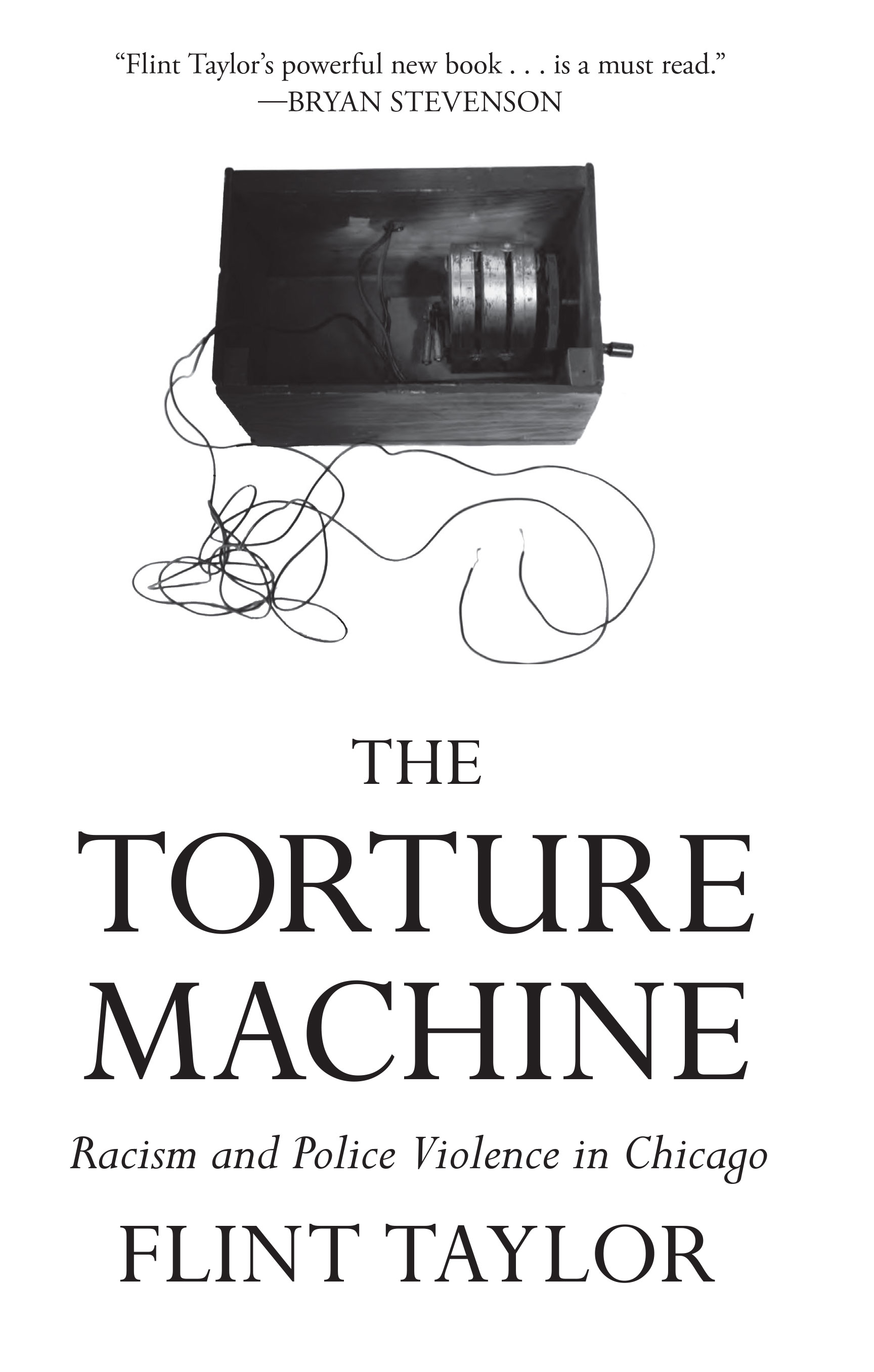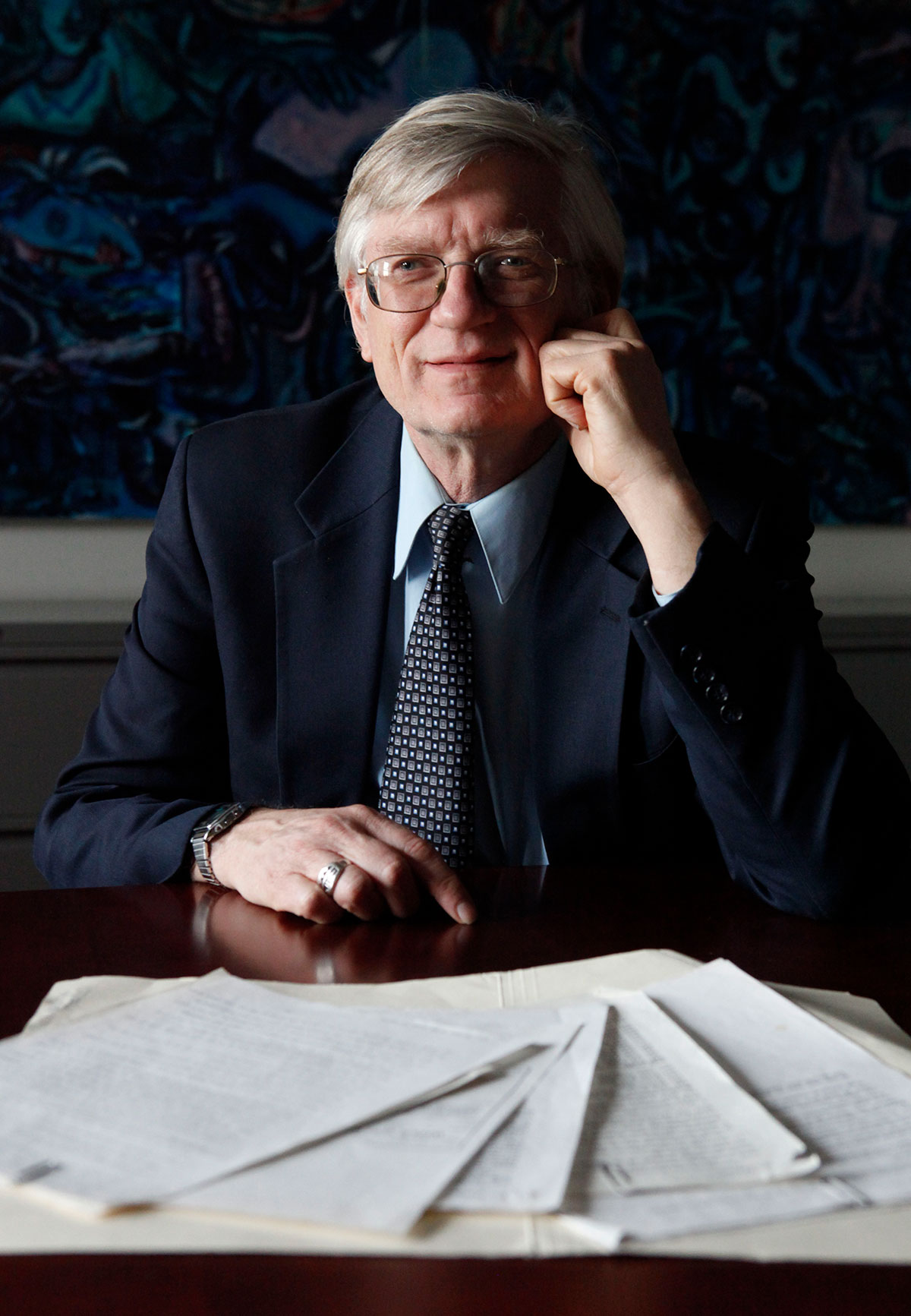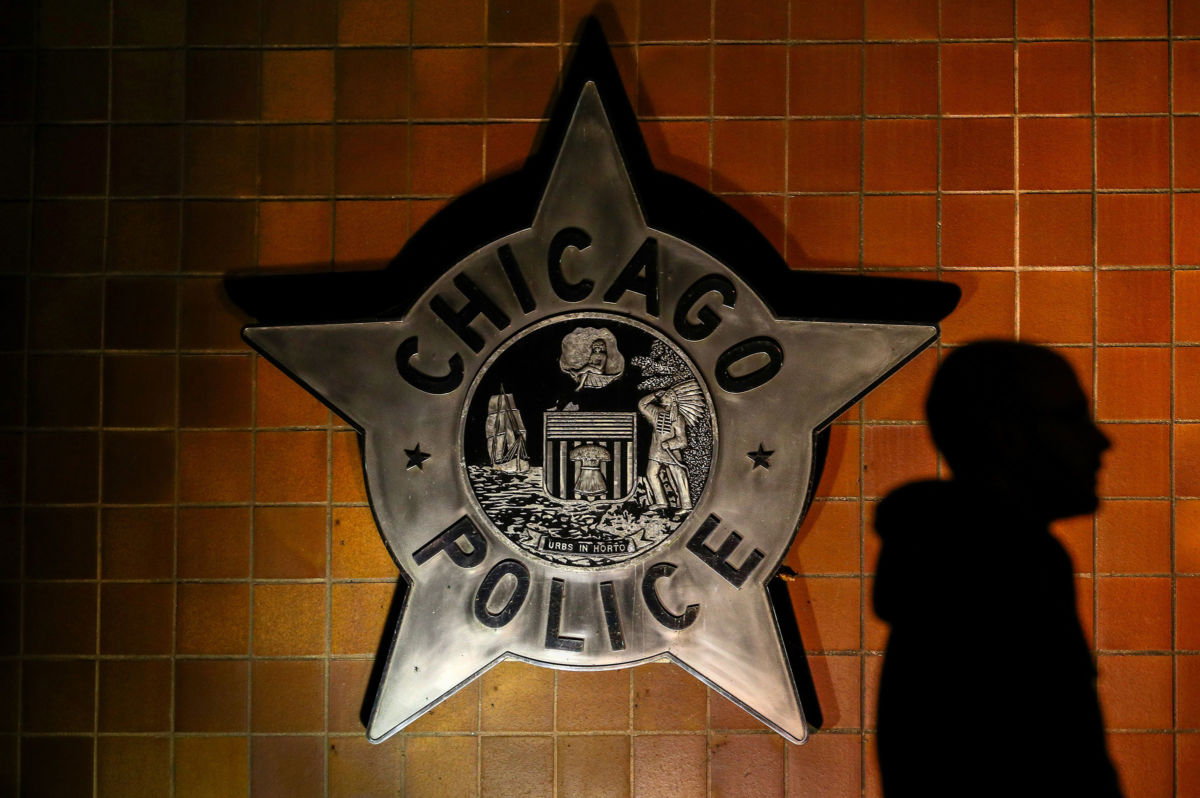Part of the Series
Progressive Picks
Support justice-driven, accurate and transparent news — make a quick donation to Truthout today!
Flint Taylor’s new book, The Torture Machine: Racism and Police Violence in Chicago, is one of those remarkable works that won’t fit under any one category. It’s at once a history of civil and human rights battles in Chicago with national and global reach, a text of modern urban sociology, an example of critical legal theory, a long polemic against white and class privilege, a literature of political exposure, a manual of strategy and tactics, and last but not least, for Flint himself, an autobiography. In its pages, Chicago’s top lawyer of the left also shares with us the intense and determined commitment, with all his highs and lows, that lasted through five decades of his personal life to the present day.
The narrative begins with Taylor as a young man, teamed up with other young radical lawyers fresh from passing their bar exams. They had been working with Chicago’s Black Panther Party and were among the first on the scene just after Fred Hampton was murdered in his bed. As the cops pulled out, the young lawyers managed to take over and secure the site, and pulled in the media and community leaders to examine the scene before any evidence was altered or disappeared. The reaction sent shock waves through Chicago, since it was clear there was no “shoot-out,” as authorities had claimed, but cold-blooded assassination by Chicago police, with an assist from the FBI. To make a long story short, Hampton’s killers were never tried and walked free, but Taylor and his fellow legal team won a substantial wrongful death settlement from the City of Chicago for Hampton’s family in 1982. In the spirit of the times, the young lawyers took their share of the settlement and used it to help sustain the People’s Law Office (PLO), dedicated to fighting police brutality and other injustices in the greater Chicago area, which they had founded in 1969.
To this day, the Chicago Police Department (CPD) has never stopped supplying the PLO and other progressive lawyers with a constant source of new clients seeking justice. Whether by mistreating young people of color on the streets, trying to suppress free speech and protest, abusing people in prison, attacking the LBGTQ community, or warping the courts with false evidence and accusations, the CPD, with the backing of City Hall and the State’s Attorney’s office, have carried out a decades-long reign of terror diametrically opposed to their stated mission: “We Serve and Protect.”
The cover of The Torture Machine features an odd graphic at the heart of the story. Anyone not yet familiar will be puzzled by it. It’s a plain black box with a series of wires streaming out of it, along with a crank handle and knobs. It’s a replica of a device concocted by GIs in Vietnam to torture captured Vietnamese, both soldiers and civilians. Based on field telephones that could be charged up by cranking the handle, the wires, with alligator clips, would be connected to fingers, ears, nipples, testicles and genitals to deliver severe shocks and burns. Its jerry-rigged purpose was to torture, punish and extract information, all at once.

What did the device have to do with Chicago? Taylor and the PLO team, in taking up brutality and wrongful conviction cases over several years, kept hearing from clients that “confessions” had been extracted from them by torture, and these accounts often had one thing in common: the mention of this device and its use in Chicago’s Area Two police headquarters, specifically, in the upstairs detective offices headed by Lt. Jon Burge and his team of more than a dozen detectives and CPD officers.
The PLO lawyers did a simple but radical thing. They took their clients at their word. They believed them and set about digging up the truth of their claims. They learned that Burge was a Vietnam veteran, and learned to use the electric shock device on prisoners during the war. Once Burge was in the CPD and moving up to detective rank, he had built at least one of his own, and was making use of it on Black male prisoners. And not just one or two prisoners, but at least 100 or more. Nor was it a rare event. Burge did it regularly, over decades. Nor did he do it alone; he had a squad of more than a dozen Area 2 and Area 3 detectives regularly using the box and other torture devices, such as plastic bags for suffocation. While they worked this evil mainly at night in the upstairs rooms of Area 2, they weren’t hidden from other cops. Others, all the way to the top of the CPD, knew about it. Likewise, the States Attorneys, some judges, and the Mayor’s office; in short, to one degree or another, the entire criminal legal system in the city was complicit in torture and other human rights abuses.
These assertions may seem far-fetched and over-the-top, at least to those unfamiliar with Chicago’s politics and police. But the power of the book is in Taylor’s relentless and tenacious efforts to bring the truth, the whole truth and nothing but the truth, to the surface and the bright light of day. He had to do it doggedly, repetitively and sometimes piece by piece, decade after decade. But in the end, there it is, and there’s no one who can deny it without turning beet red with shame.

The torture saga begins with an incident in the early 1980s, where two Chicago police officers were shot and killed in an altercation with several Black men they had stopped. Over the next five days, six men were rounded up and tortured, and two of them, brothers Andrew and Jackie Wilson, made “confessions” and were found guilty of the killings. Jackie Wilson contended that police abused him during interrogation, and his co-defendant and brother Andrew, was found by doctors after his interrogation to have numerous injuries. From prison, Andrew Wilson contacted the PLO and asked if they would work on a federal civil rights case, since his confession was extracted by torture.
“Labyrinthine” would be a mild word for the complex maneuvers through the courts on the cases of the two brothers over several years. But thanks to the PLO and allies, Jackie Wilson, sentenced to life, won his freedom. Andrew Wilson, sentenced to death, won a new trial, was convicted again, but was sentenced to life instead of death, and eventually died in prison. Andrew had also won a federal civil rights judgment.
Intermixed with the Wilson cases are dozens of others, including some against those who committed no crime save that of being in the wrong place at the wrong time, with many victories for the defendants and their families. The crass examples of racial and class privilege and abuse in the prisons and courts introduced in Taylor’s accounts could fill a book on any one of those charged.
Chicago authorities were not happy with the work of the PLO lawyers. Time and again they were slandered as liars, con artists and only in it for the money made in million-dollar settlements. The cops were especially hostile and the source of threats of violence as well. But opposing attorneys, politicians, and supposedly neutral judges piled on as well.
Several key points, however, stand out in the course of the book and the evidence behind it. First, Taylor and his PLO colleagues were meticulous in putting the interests of their clients and their client’s families first and foremost. Second, they went to great lengths in “seeking truth from facts,” even when it posed dangers to themselves. Third, they deserved every penny they got, and continue to get, in settlements — a good deal of which keeps the People’s Law Office alive and functioning for future cases.
But Taylor also had another motive, which weaves through the book like a red thread. He is determined to bring Jon Burge to justice, to try him in a court of law, and see him sent to prison. Moreover, he wants to see Burge’s boss, Richard M. Daley, held accountable. To accomplish these goals, Taylor and the PLO are well aware that the effort will be political as well as legal.
This is where The Torture Machine offers a unique perspective: It’s a field manual of strategy and tactics, and Taylor is very good at it. From the start, he seizes every opportunity to use the media to build his clients’ stories within a bigger story of big-city politics, corruption and injustice. It doesn’t matter if it’s a small neighborhood newsletter, the independent Chicago Reader, the widely read free paper selling futons along with progressive news, the Chicago Defender or other small Black newspapers, the Sun-Times, the Tribune, The New York Times and other national publications, local TV or National networks. As one of his adversaries warned, “There’s nothing more dangerous than letting Flint Taylor get in front of a camera or microphone.”
Even within unfriendly news outlets, Taylor takes the trouble to find and befriend those reporters with an open mind and a degree of professional objectively, if not sympathy. His goal seems to be recognizing that the court record is not the only record of value, and once something is in print or on tape, it might have multiple uses elsewhere, in or out of court, and often does. Taylor is also deft at building organizations and making use of coalitions, acknowledging a truth that trials are not only won in courtrooms, but in the wider community as well. Organizations can often speak more freely to the public than “officers of the court.” To win the victories and settlements aimed for, the PLO often had to assist in building an entire counter-hegemonic bloc, from people in the neighborhoods to the media and political groups, to a majority of the City Council.
Taylor and his comrades also do well in finding and making good use of conflicts and tensions in the camp of their adversaries. They evaluate judges one by one, check out the family inter-connections of various police officers and officials, looking for hints of bias, and make good use of the well-known differences between African American patrolmen and the rest of the force — all to find information to get them closer to the truths that will help their clients. A handful of cops, disgusted with what they know is happening, come forward, breaking the “code of silence.” (One cop who went to great lengths to remain secret but helped reveal the scope and breadth of the torture scandal early on in the history of the scandal was nicknamed “Deep Badge” by Taylor.)
In the end, Taylor gets his man. First Burge is suspended, then fired, and retires with his pension and boat named the Vigilante (you can’t make this up!). But even as the statute of limitations is running out, Taylor travels to Florida (with a bodyguard) to depose Burge and get him back in court where he is found guilty of perjury and sentenced to four and a half years in prison. Burge is broken physically but remains an unbowed racist and fascist to the bitter end. His luck with Daley is not quite as good. Taylor wins motion after motion to bring Daley to a deposition table, but Daley is not without resources and manages to parry all but one narrow last decision, one that might still go the wrong way for the former mayor. The final version of the book reveals that Daley, now suffering from the effects of a reported stroke, was deposed by Taylor in 2018 but the transcript is shrouded in court-ordered secrecy.
As Taylor notes, however, this is far from the only reason that Burge’s fate is only a partial victory. True, the PLO and allied lawyers have forced the city to pay over $130 million to those tortured and their families — not counting the enormous costs of lawyers for the police. Many police involved remain free and many tortured prisoners remain behind bars. The torture outrages will “never be behind us,” Taylor writes in his epilogue; not until Chicago “reckons fully with the racist nature of law enforcement and mass incarceration.”
Press freedom is under attack
As Trump cracks down on political speech, independent media is increasingly necessary.
Truthout produces reporting you won’t see in the mainstream: journalism from the frontlines of global conflict, interviews with grassroots movement leaders, high-quality legal analysis and more.
Our work is possible thanks to reader support. Help Truthout catalyze change and social justice — make a tax-deductible monthly or one-time donation today.
